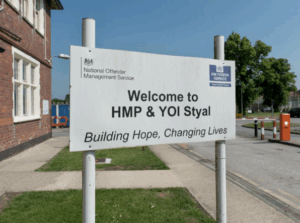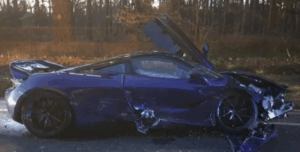The “Is Your Vision Roadworthy?” campaign was a collaboration between leading motoring organisations, optical associations, eye care charities and police forces throughout England, Scotland and Wales.1
Between 27 February and 12 March, police officers throughout Britain requested that motorists take part in a roadside vision screening. The result – 2.2% of all number plate tests (reading a car number plate from 20 metres) resulted in failure.2
The campaign also revealed that men appear to have the biggest blind spot when it comes to vision and driving, making up three-quarters of those who failed the number plate test. Advancing years also increased a driver’s risk of falling short of the legal eyesight standards – the average age of those unable to read a number plate from 20 metres was 69.3 years. The youngest driver to fail was 30 and the oldest was 90 years of age.
85% of drivers who failed the “Is Your Vision Roadworthy?” roadside vision screening had their licence revoked on the spot under legislation known as Cassie’s Law.3
This comes as traffic volumes are set to peak over the Early May Bank Holiday4, with the charity Eye Health UK estimating over half a million car journeys will be made by drivers whose vision falls below the legal limit5 due to an undiagnosed or untreated vision condition or simply because a driver isn’t wearing the eyewear they have been prescribed for driving. A third of those who failed the number plate test and had been prescribed corrective lenses were not wearing them at the time they were stopped.
Chief Constable Jo Shiner, the National Police Chief Council’s lead for Roads Policing, comments, “Personal responsibility is the starting point for safer roads. Making sure your eyesight meets the standards of vision for driving is really important and something only you can do to keep yourself and all other road users safe while driving.”
All drivers have a legal responsibility to ensure their vision meets the eyesight standards for driving every time they get behind the wheel. Uncorrected defective eyesight is punishable by a fine of up to £1,000, three penalty points and possible disqualification. It also increases a person’s risk of a collision and can invalidate their insurance. Yet, DVLA stats show fewer than half of motorists (48.5%) are aware of the eyesight standards for driving.6
Optometrists recommend that everyone has their eyes checked every two years to ensure their vision is fit for the road and meets the full legal eyesight requirements for driving. This includes having an adequate field of vision. But the uptake of routine eye tests has fallen over recent years, with 17.5 million Brits currently overdue a trip to the opticians.7 42% of drivers undertaking the roadside vision screening admitted they had not had an eye test in the last two years, as recommended.
A state-of-the-art driving simulator at Brunel University gives an insight into what can happen when people drive with poor eyesight. When a driver’s vision was blurred, they struggled to stay in lane, keep a consistent speed or read road signs. Even when sight was simply reduced to the legal minimum level, people strayed out of lane 62% more often than with normal vision. Subjects also couldn’t recognise a quarter (23%) of the road signs they passed.8 Impaired vision also prevents motorists from reacting to hazards and causes fatigue.
Around 3,000 people are killed or injured by a driver with failing eyesight every year in the UK.9
Emma Damen, daughter of Jim Tassell, who was tragically killed when a driver knocked him off his bike while he cycled along a country lane near Andover, Hampshire in 2022, says, “My Dad was killed by a driver who could not see more than 2 metres ahead, the legal requirement is 20 metres. This driver knew his eyesight was defective yet still chose to drive, resulting in indescribable devastation to me and my family. I urge anyone who has concerns regarding their own eyesight or another driver, please get an eyesight test to confirm you are safe to drive.”
Department of Transport statistics also show there were 33,399 casualties over the past decade to road users where glare from sunlight has been among the contributing factors. On average, 653 people were killed or experienced serious injuries each year.10
Conditions such as cataracts (a clouding of the lens which affects the vision of over half (54%) of those over 6011) can increase sensitivity to light and glare caused by the sun and oncoming headlights.
For practical advice and information about keeping vision roadworthy as well as information about the legal eyesight standards and eye conditions that need to be notified to the DVLA, visit: www.visionanddriving.info





































